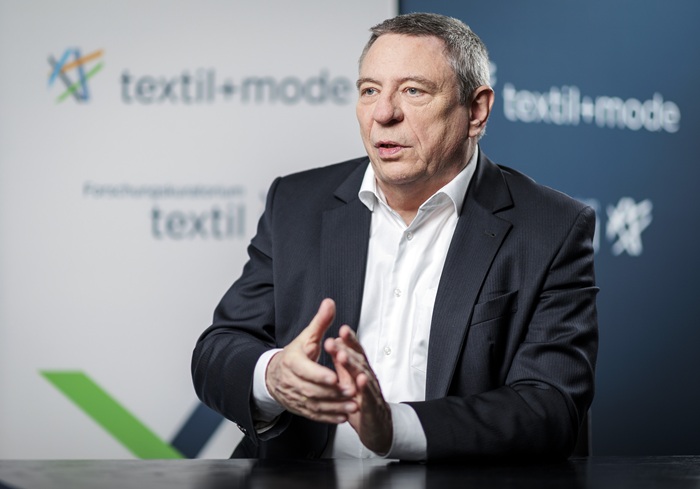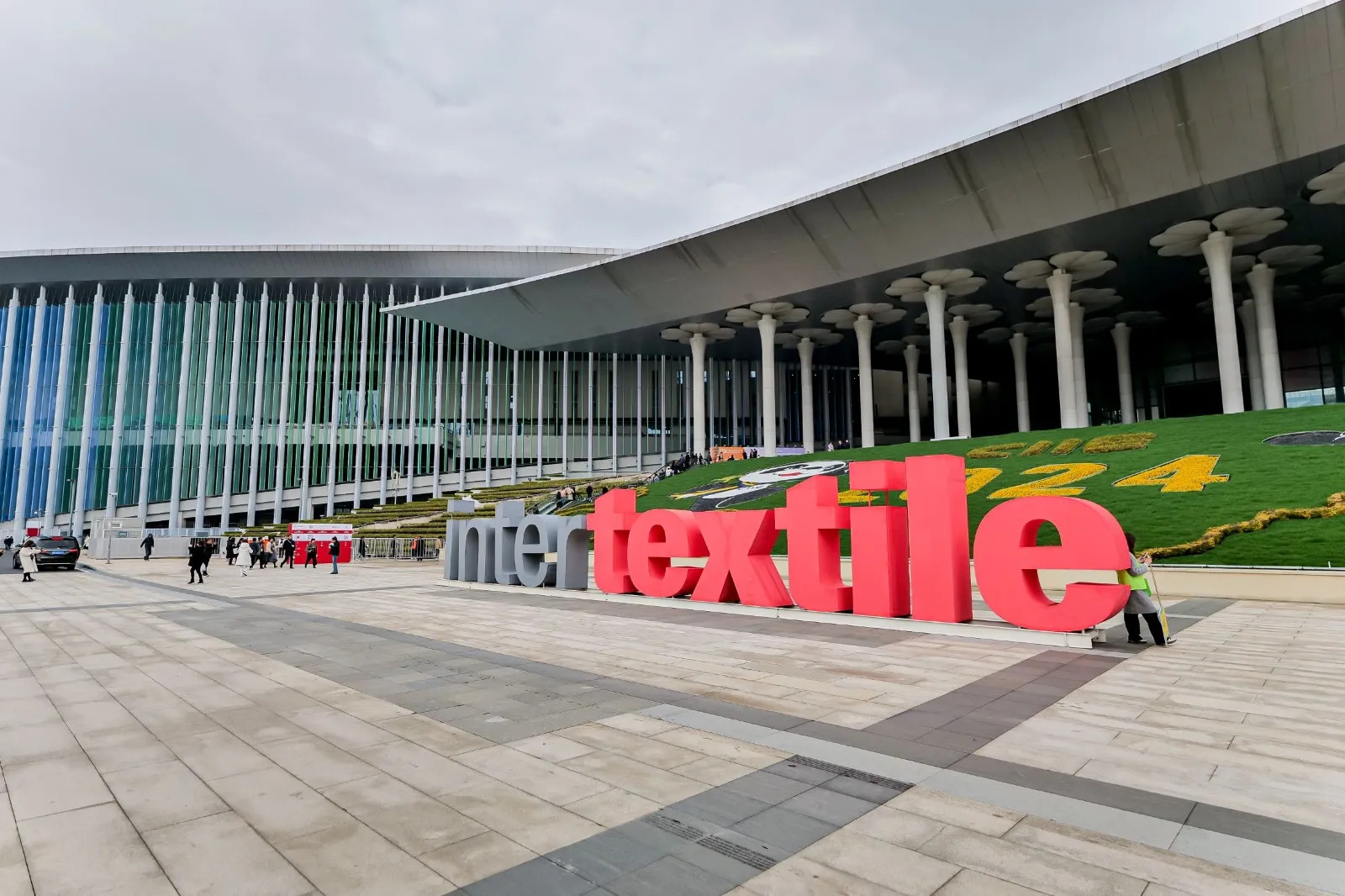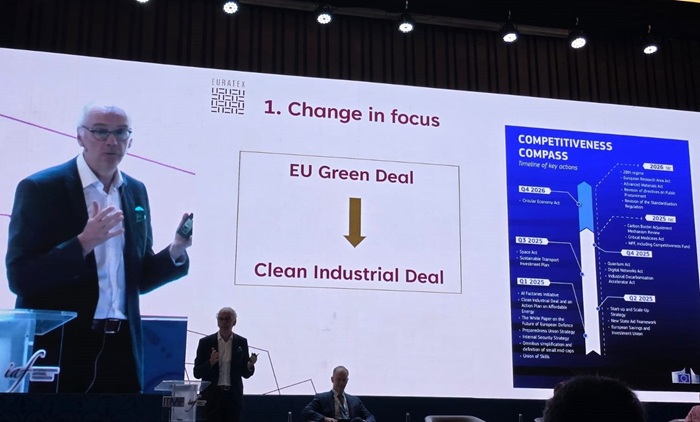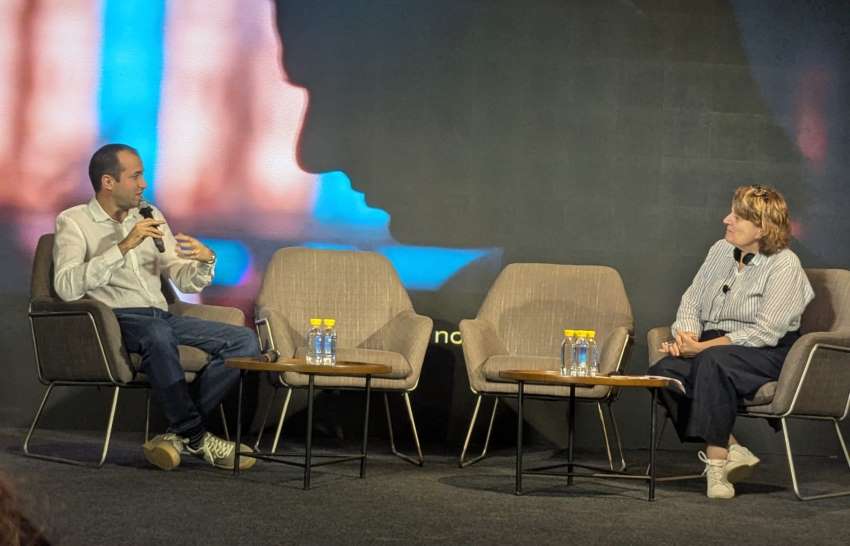FW
While helping turn Cambodia, Laos and Myanmar into bigger destinations for exports, China's investments are transforming its smaller Southeast Asian neighbours. This is driving some of the world's fastest economic growth rates and providing Chinese companies with low-cost alternatives as they seek to move capacity out of the country.
The move is also helping Asia's largest economy and nations to what looks more and more like a new era of waning US commitment to the region from a more inward-looking administration. China is investing in everything from railroads to real estate in Cambodia, Laos and Myanmar, the frontier-market Asean economies. In Cambodia, China Minsheng Investment Group and LYP Group, headed by Senator Ly Yong Phat, signed a $1.5 billion deal last week to build a 2,000 ha city near the country’s the capital, Phnom Penh with a convention centre, hotels and golf course, it is reported. The spending equals roughly one-tenth of the country's $15.9 billion gross domestic product.
In landlocked Laos, work started last year on the China-Laos railway which will stretch 414 kms from the border to the capital Vientiane. The project, part of Chinese President Xi Jinping's One Belt, One Road initiative, will cost US$5.4 billion. Myanmar, which is liberalising its economy and adopting market reforms after a transition to democracy, is forecast by the IMF to expand 8.1 per cent this year, the fastest in the world after Iraq.
Arvind gets Asia’s Best First Time Sustainability Report award at the recently concluded 2016 Asia Sustainability Reporting Awards (ASRA) in Singapore. India’s leading lifestyle and fashion conglomerate was also declared joint winner in Asia’s Best Materiality reporting category in which it shared the award with Qatar General Electricity and Water Corporation.
Commenting on the award, chairman Arvind Limited, Sanjay Lalbhai said he felt proud to win Asia’s Best First Time Sustainability Report, 2016. The win reiterates the conglomerate’s commitment towards sustainability. Sixty eight companies from 14 countries made it to the final round of 2016 Asia Sustainability Reporting Awards. The finalists were shortlisted by members of an independent judging panel.
Hosted in Singapore, the Asia Sustainability Reporting Awards (ASRA) are the highest recognition for sustainability reporting in the region. To encourage more Asian companies to embrace sustainability reporting, CSR Works International, a Singapore-based sustainability firm, has created the Asia Sustainability Reporting Awards. The awards are CSR Works International’s not-for-profit initiative and are part of its own corporate responsibility programme.
More than 170 delegates from as five countries attended the flagship event by GOTS in Dhaka on November 23. They also took part in a national seminar on GOTS Certification. These included international brands and retailers, manufacturers and exporters. Representatives of the Bangladesh government, certification bodies and professionals from testing, chemical compliance, media, trade associations, NGOs, academics and consultants took part in the seminar.
The theme of the conference was: ‘Business Case for Sustainability with Organic Textiles’. Out of the more than 3,800 facilities that GOTS has certified worldwide, more than 400 are in Bangladesh alone. This happens to be the 5th highest number of GOTS certified facilities worldwide.
In his welcome address, Sumit Gupta, GOTS representative in Bangladesh and India appreciated the Bangladesh textile industry for its perseverance and consistent efforts to achieve both quality and quantity in their products and exports. The industry has been successful in maintaining consistent growth in export for last several years. Gupta also talked about the ambitious target of local textile industry to achieve $50 billion in RMG exports and encouraged the industry to use sustainability and GOTS as a tool to help them achieve this goal.
"In order to build a new business model for cotton farming, an American is working together with Indian farmers. More than 50 per cent of India’s population is in agriculture and related industries. They make up nearly 20 per cent of the country’s GDP. Yet, stories of farmer suicides have been plaguing the country throughout the last 5 years. In 2013, for instance, nearly 12,000 farmers committed suicide; that would be on average more than 40 deaths a day."

In order to build a new business model for cotton farming, an American is working together with Indian farmers. More than 50 per cent of India’s population is in agriculture and related industries. They make up nearly 20 per cent of the country’s GDP. Yet, stories of farmer suicides have been plaguing the country throughout the last 5 years. In 2013, for instance, nearly 12,000 farmers committed suicide; that would be on average more than 40 deaths a day.
Cotton is one of India’s specialty crops; India is also the second largest producer of cotton, after China. Yet more than 90 per cent of cotton is produced using conventional methods and with GMO seeds. The trouble with GMO seeds is that they cannot be used over and over again. That means farmers have to invest more to buy more seeds after every harvest. As a matter of fact, organic farming would have disappeared if ChetCo wouldn’t have pushed for it.
The Hyderabad-based Chetna cooperative set up six seed banks in the last two years — all are concentrated in Orissa where cotton has become a cash crop in
Orissa where cotton has become a cash crop in
recent times. The seed banks are helping bring back a collection of non-GMO seeds to the Indian subcontinent. Seeds are only the first step, though. Historically, organic cotton farmers have sold their organic harvest for conventional prices because of a lack of demand. The Chetna Co-op was built to not only facilitate organic cotton farming in the country, but also help these farmers find a market.
How did it start?
Three years ago, New York-based Godfrey was working at Loomstate, an American brand selling organic cotton clothing sourced from India. While Loomstate was one of the small number of companies interested in rectifying the cotton supply chain, Rhett Godfrey, Founder of the Chetna Coalition realised there was power in numbers. So at the Textile Exchange’s Organic Cotton Round Table in Istanbul, Turkey, he asked other clothing retailers to commit a percentage of their supply chain to organic cotton, sourced from the Chetna Cooperative. 80 per cent of the brands were not interested. They said, go do it first and then come back to us.
ChetCo is aiming to build a CSA model. In the past three years, ChetCo’s membership has been doubled, and they are buying 320 per cent more cotton fibres. As a result, the co-op’s organic cotton sales have gone from 17 per cent (in 2013) to more than 49 per cent (in 2015/16 harvest).
Besides Loomstate, there are about a dozen brands working on organic cotton supply chain. They include Boll and Branch, a New Jersey-based company, that produces organic cotton bedding, towels, and blankets; PACT, specialising in the basics (undies, camis, leggings); Nudie Jeans, a Swedish brand with retail outlets in the US, making organic cotton denims. For them, the smaller the better mantra works the best and they are in hurry to expand their horizons, which can be challenging at this juncture. For them, growth has to come with social welfare.
In this line, Colorado-based PACT has invested in the infrastructure of these cotton-growing communities by updating tribal boarding schools for girls, giving them bikes to get to & fro, providing business training for women, and supporting cooperative training and research. The result has been lower drop-out rates and more girls staying in school.
Currently, 16 brands have committed to ChetCo, working with nearly 35,000 small-scale organic cotton farmers and 2,000 garment workers. By 2015, the company had produced over two million organic cotton items using this supply chain. These numbers definitely indicate sings of good times, yet the rest is up to the fashion police to put across the message of promoting such businesses with social cause.
American Apparel may be sold to Canadian clothing maker Gildan Activewear. American Apparel has filed for bankruptcy. This year, American Apparel laid off at least 500 workers as it cut production. An additional 3.500 employees may lose their jobs in January.
However, Gildan has no interest in buying American Apparel’s 110 stores in the US and 83 others around the world including UK, Ireland, Germany, Spain, Canada, Japan and Australia. The Canadian clothing company is more interested in buying some of American Apparel’s manufacturing plants in the US. But most production will probably move to Gildan’s manufacturing hubs in Central America and the Caribbean where it’s much lower cost than anywhere in the US.
Gildan Activewear bid $66 million to acquire American Apparel’s Apparel’s intellectual property rights and some other assets. American Apparel, based in Los Angeles, began as a wholesale T-shirt business in 1998. But the hoped-for turnaround of the clothing manufacturer and retail chain—which has long grappled with shrinking sales and an outsize store footprint—did not happen. A plan to improve online selling didn't pay off, and, at a time when shoppers are going online in greater and greater numbers, American Apparel watched its online sales fall.
A collaboration between the British Fashion Council (BFC) and Google will bring to life creativity, heritage and craftsmanship of British fashion. A new digital platform featuring content and stories from top British designers and fashion insiders has been created for anyone around the world to enjoy, for free. The platform will provide a single destination to educate and inspire future generations of young fashion creatives, designers and students.
BFC and Google have teamed up for content from fashion icons -brands, designers, makers and craftspeople, creatives, photographers, stylists and models - and used technology to tell their stories. Visitors will be able to watch top brands - from Burberry to Vivienne Westwood - feature in specially curated digital exhibits through innovative and immersive digital experiences. There are over 1,000 assets to explore, including over 20 multimedia exhibits, 25 videos and three virtual reality experiences, all accessible from anywhere in the world, on desktop, laptop or mobile.
Visitors can also explore rich, archival materials from top British fashion houses sorting their searches by color and chronology. They will be able to get close to British Fashion Council’s biggest characters and moments and explore profiles of the fashion industry’s key players, from Naomi Campbell to Christopher Bailey. Users will also be able to go behind-the-scenes of top craftspeople and producers of British fashion.
Fed up with non-availability of infrastructure including natural gas and paucity of funds, the the Pakistan Textile City Limited (PTCL) has decided to wind up. The voluntary winding up process has already begun. This was revealed in the National Assembly Standing Committee meeting on Textile Industry which met under the chairmanship of Khawaja Ghulam Rasool Koreja recently.
The committee was briefed about the closure of Pakistan Textile City Project in Karachi and its resolve to sell the land and Plastics Technology Centre (PTC). The committee expressed its reservations over the closure of Pakistan Textile City Project, Karachi and observed that due to mismanagement and corruption, the debt of textile city has exceeded to Rs 2.4 billion.
The committee directed the ministry to sell out 250 acres of its land for payment of outstanding debt. It also said that efforts should be made to make it operational by involving Chinese/foreign companies for its betterment. It was informed that the company owes a debt of Rs 2.4 billion to the National Bank of Pakistan out of which Rs 1.3 billion were spent on the purchase of land at Port Qasim and Rs 1 billion have so for been incurred as interest on loan.
On a daily basis the markup payable is Rs 700,000 approximately. These challenges could be easily handled by selling 200 acres of land to K-Electric for setting up a coal-fired power plant.
Everest Textiles USA, a unit of Everest Textile in Tainan City, Taiwan, will spend $18.5 million to bring a sports fabric weaving and finishing operation that will employ 610 to Forest City that in Rutherford County about 65 miles west of Charlotte along US Highway 74. The company expects to start production of the fabric either in the second or third quarter next year, says Tom Johnson, interim director of the Rutherford County Economic Development Commission.
Everest Textiles will take over an existing building in Forest City that measures almost 400,000 sq ft to create the plant. Workers there will weave, dye and finish the fabric which will be used in sports apparel. It’s the first US operation for Everest Textile. The Taiwanese company now supplies apparels to include Nike, Columbia and Patagonia from factories in Taiwan, China and Thailand.
Scott Chen, VP, Everest Textile said the company is known for innovation. They position itself a leading global enterprise and commits to contribute to human society by providing innovative, environmentally friendly and comfortable textile products to the industry and consumers. Everest Textiles qualifies for about $3.1 million in state and local incentives. The largest is a $3 million state Job Development Investment Grant that will be paid to Everest Textiles over 12 years.
Purchasing goods on the net is quick and easy. This method is being used more and more in the industrial B2B sector. And using this method, Karl Mayer offers its customers the ‘Webshop Spare Parts’. This online platform, for quick and easy ordering of spare parts, launched at ITMA 2015 has been getting excellent feedback ever since. It is a clear sign that customers are using Webshop Spare Parts more often. According to an official of the company, the reason for this high level of acceptance is that it is easy to use and the availability is completely transparent: anything listed is also ready for dispatch.
From the middle of October 2015, the range of products available to order has been extended to include pattern discs and chains. Another new feature of the Webshop Spare Parts is that it gives users various rights of use. On the basis of a defined authorisation key, specific authorisation is given to read, store and order articles, so that the customers can retain their internal buying procedures and manage them optimally.
Extending the functions, progress has also been made with expanding customer base. At ITMA ASIA + CITME 2016, the nod has been given for the Webshop Spare Parts to go into operation in China. In view of this success, Axel Wintermeyer and his team are already considering future developments. There are plans to integrate Karl Mayer’s Technical Textiles Business Unit into the Karl Mayer Webshop Spare Parts next year.
The Central government has extended the export entitlement quota for readymade garments & knitwear, yarn and fabrics and made-ups to the US, Canada and European Union for one year with effect from January 1, next year. ‘The government hereby decides to extend the operation of the residuary provisions of yarn, fabrics & made-ups export entitlement (quota) policy for a further one year with effect from 1 January, 2017,’ reads a notification issued by the Ministry of Textiles.
The government has also extended the operation of residuary provisions of garments and knitwears export entitlement (quota) policy for a one more year with effect from January 1, 2017. Garments and knitwear export entitlement policy is applicable with respect to countries where such exports are covered by restraints under the provisions of the agreement on textiles and clothing.
Export entitlements will be allotted only to exporters registered with the competent registering authorities as per the export-import policy prevailing from time to time. Quantities that become available from time-to-time on account of surrenders, flexibilities or otherwise shall also be allocated under the First Come First Served (FCFS) system.
Earlier, the government had decided to enforce operation of residuary provisions of garments and knitwear export entitlement (quota) policy and yarn, fabrics & made-ups export entitlement (quota) policy initially for one year with effect from January 1, 2005, and extended the same from time-to-time. These provisions had been extended up to December 31 this year.












